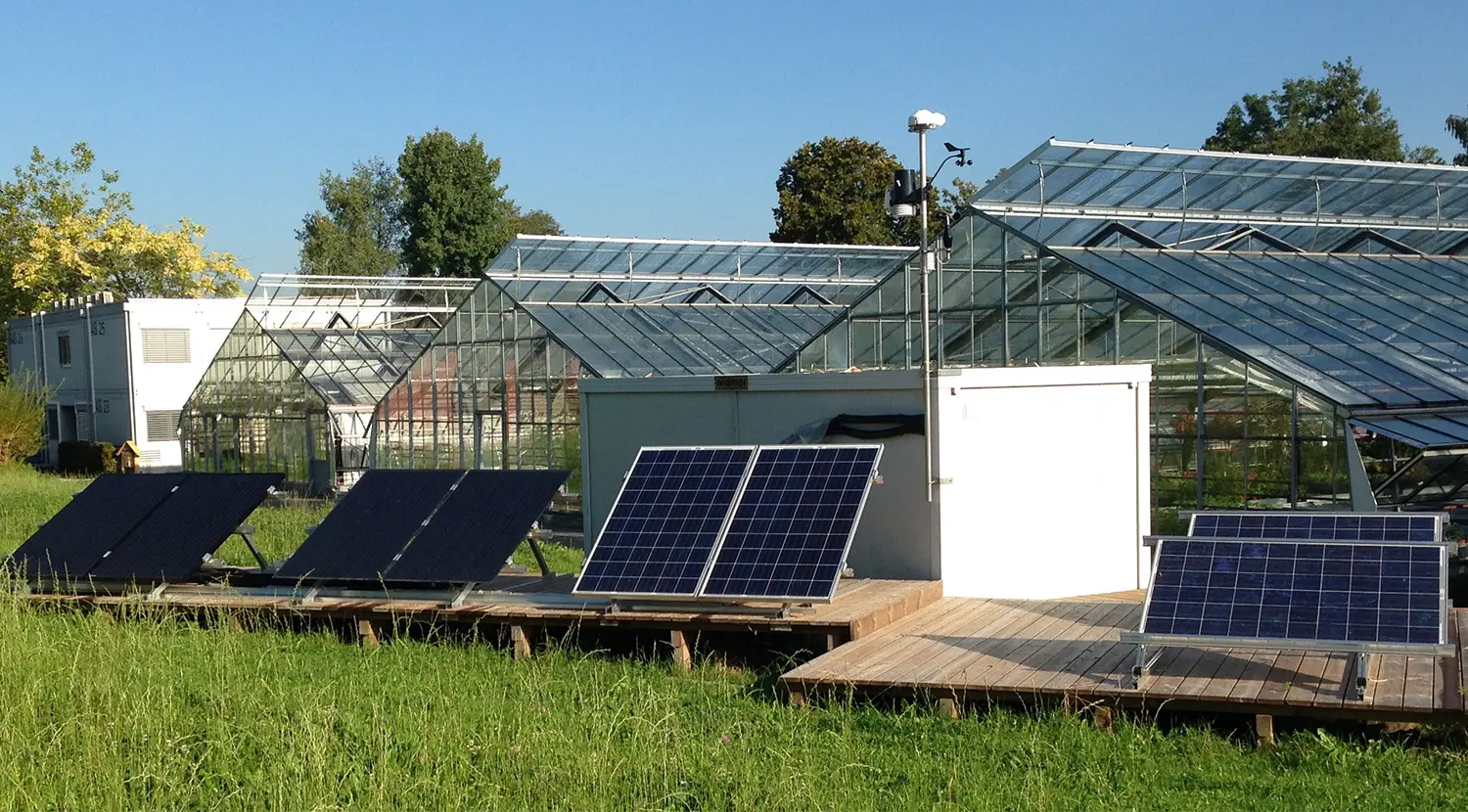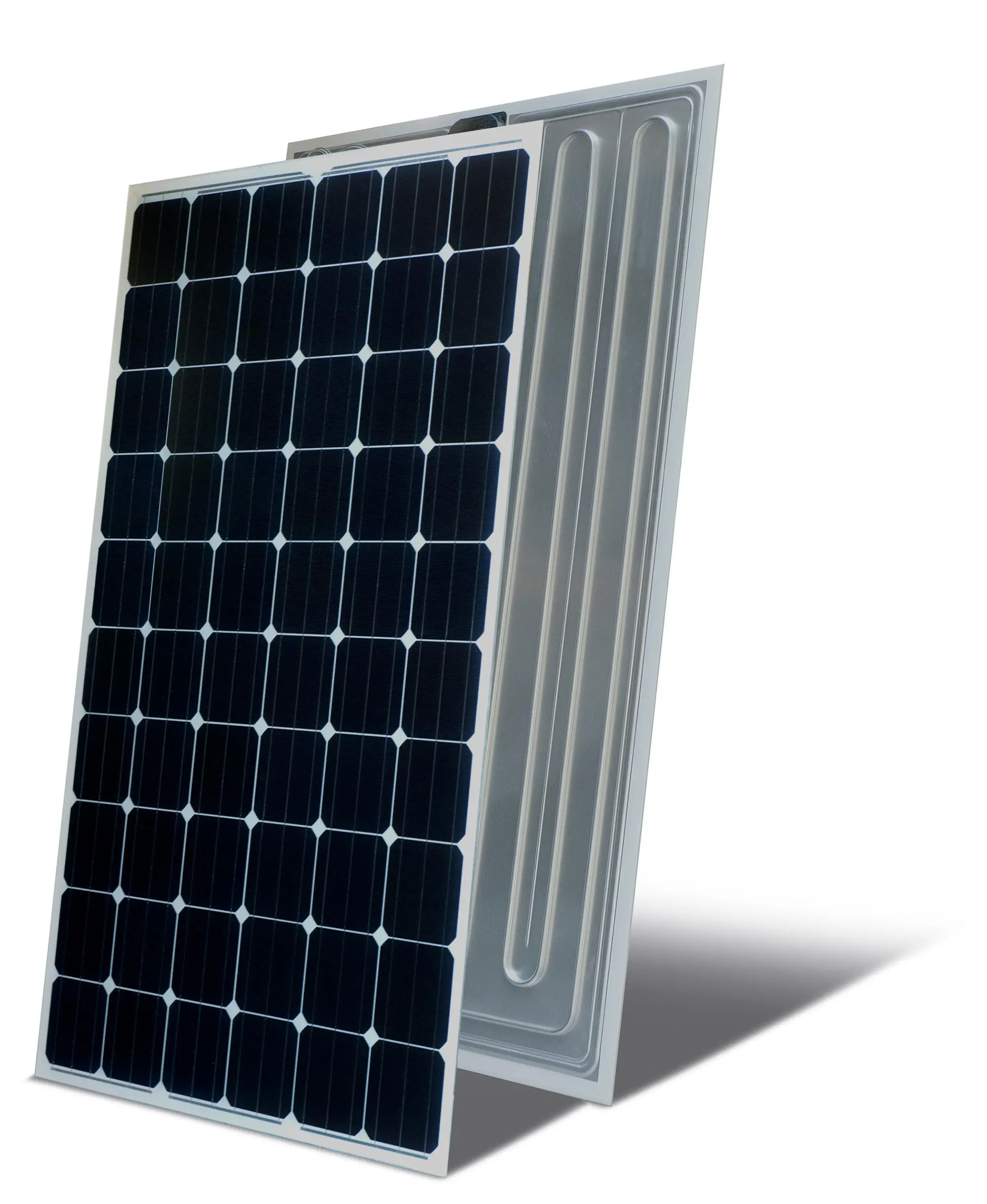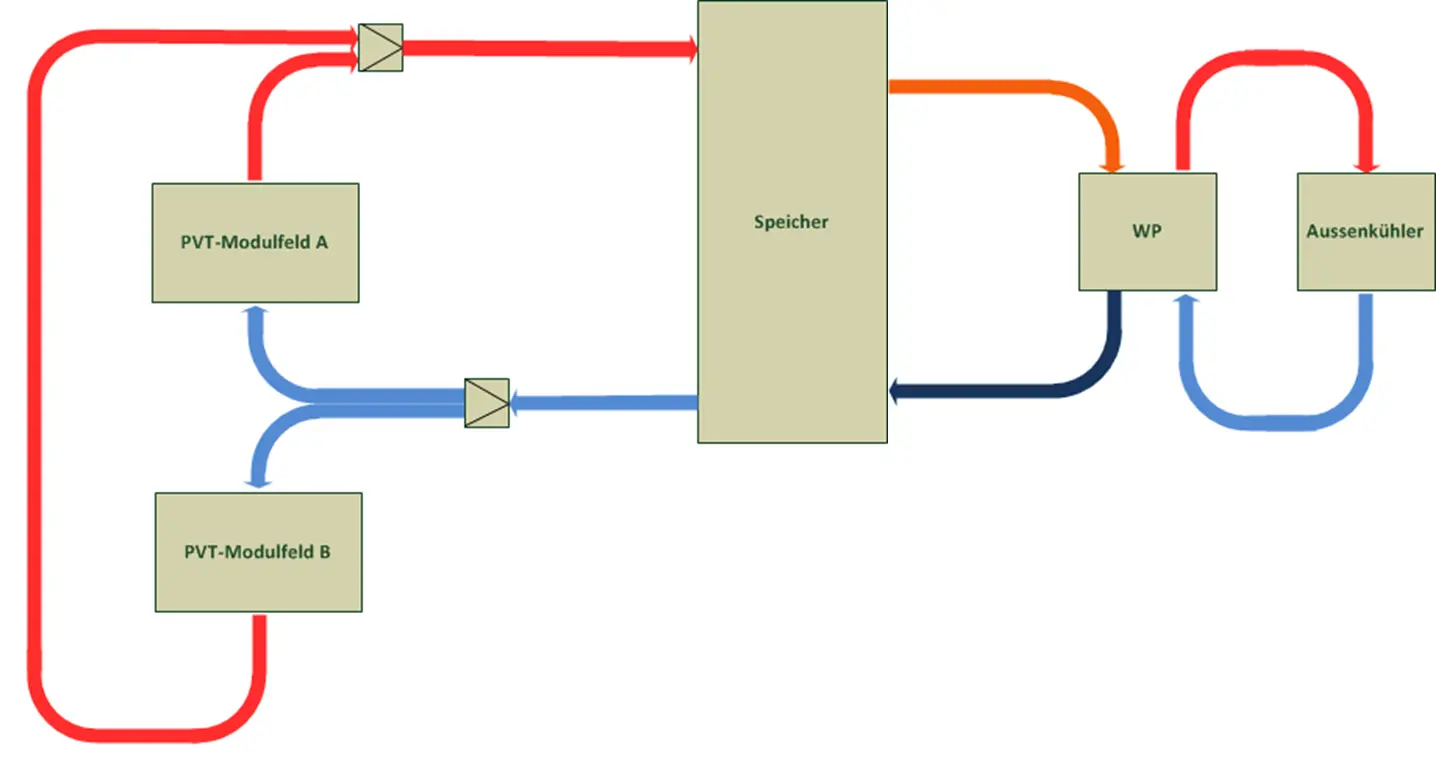PVT Test Facility
With this project, we want to explore the performance of hybrid (PVT) solar energy modules in various applications. Our experimental system measures real yields and optimizes operating parameters to identify possible applications and further developments of PVT technology.

Background and Motivation
In addition to the classic photovoltaic (PV) and solar thermal (T) modules, hybrid modules (PVT) that combine both technologies have also been available for several years. Higher energy yields per unit area are offset by higher demands on building services and higher investment costs. Due to the typically relatively low return temperatures of hybrid modules, they are not suitable for all thermal applications, such as for classic domestic water heating. They are much more suitable for low-temperature applications such as for water preheating, as a heat source for a heat pump or for thermal regeneration of the soil when using geothermal probes.
There is still little practical experience and some suppliers of PVT modules promise outputs that are difficult to explain in physical terms, especially in the thermal sector. The test facility at ZHAW Wädenswil is therefore used to measure and directly compare the outputs and yields of different PVT modules under real environmental conditions. On the basis of the measurement results and experiences, conclusions will be drawn about optimal areas of application and, if necessary, control optimizations will be developed.
Overview
Project manager: Jürg Rohrer
Project team: Kevin Arm, Sven Strebel
Project start: 01.07.2014
Background information on PVT modules

Hybrid or PVT modules generate both electricity and heat on the same surface and therefore allow more energy to be harvested per unit of area than pure PV modules. They are particularly suitable when there is a demand for heat in summer or when the heat can be stored seasonally. This idea has been around for over 30 years, but has not really caught on in the market so far, for both economic and technical reasons.
A distinction is made between covered hybrid modules for heat generation at high temperatures and uncovered hybrid modules for heat generation at low temperatures. Uncovered hybrid modules are most commonly used in conjunction with geothermal probes and a heat pump for heating buildings and hot water. This is intended to regenerate geothermal probes and supply higher temperatures for the heat pump in winter, thus improving their seasonal performance factor (SPF). In Switzerland, this concept is promoted by ETHZ (Prof. Hj. Leibundgut) and the company Meyer Burger AG, or 3S. Several pilot plants are already in operation.
The problem of seasonal heat storage is eliminated if the heat can also be used in summer. This is typically the case, for example, in hospitals, sports centers and indoor swimming pools. Unpublished studies by the ZHAW Wädenswil have shown that, at today's prices, hybrid modules are not yet economically viable for many applications. The simultaneous use of solar heat would make sense in terms of energy, but the additional energy yield is not enough to compensate for the higher costs of hybrid modules compared to PV modules. Manufacturers, on the other hand, often argue that the improvement in electrical performance and the heat yield are so high in practice that the use of hybrid modules is already economically viable today.
PVT Test Facility
The outdoor PVT test facility has two module arrays, each with a maximum of two PVT modules connected in parallel. The inclination of the modules can be adjusted variably between 5° and 90°. The flow temperature can be adjusted separately between -5° and 25° Celsius and the flow rate of the module arrays can also be adjusted. The thermal yield can be calculated using flow meters and temperature sensors before and after the PVT modules. The electrical power of the PVT modules is determined by measuring the characteristic curve, which yields the maximum electrical module output in each case. The system is operated using a large storage tank with a glycol-water mixture and a heat pump, among other things. The thermal energy is released into the environment. A simplified system diagram can be found in the following figure.
In addition to the thermal and electrical measured variables, air temperature and humidity, wind speed, global radiation horizontally and in the collector plane, as well as atmospheric counter-radiation, are also recorded.
Project Goals
The PVT test facility is designed to determine the suitability of hybrid modules for various applications and ultimately to provide information for their further development. In addition to the conventional use of solar thermal modules, the test facility is to be used to examine the use of other heat sources. For example, PVT modules can also produce a thermal yield when solar radiation is absent by using ambient heat. Alternatively, the PVT modules can be used for cooling by using the environment as a heat sink.
The experimental plant will be used to quantify the energy yields for the various uses and to optimize relevant plant parameters and control. In addition to the Solar Technology Group, the plant is also open to student research projects.
Current Status
The test facility has been in operation since 2015.
Related Projects
A demonstration facility with approx. 180 PVT modules is operated on the roof of the lintharena sgu. PVT solar power plant linth-arena sgu
Investigation of a heating system with a heat pump that uses hybrid collectors as the sole heat source, which simultaneously generate electricity and heat (PVT collectors). L-Sol
Investigation of the possibilities for the regeneration of geothermal probes with solar thermal energy in residential areas using simulations. SolSeasStore
Investigation of a heating and cooling concept for residential buildings and areas of different sizes, which uses hybrid collectors (PVT collectors) and an insulated, open-bottomed underground storage tank as a buffer and long-term storage tank. ExSolStore
This may also be of interest to you
Continuing education
Find out about our wide offer on CAS and courses in continuing education.
IUNR research projects
Find out about the breadth of subjects covered by our Institute.
Study
Continuing education
IUNR research projects
Find out about BSc and MSc programmes at IUNR.
Find out about our wide offer on CAS and courses in continuing education.
Find out about the breadth of subjects covered by our Institute.

